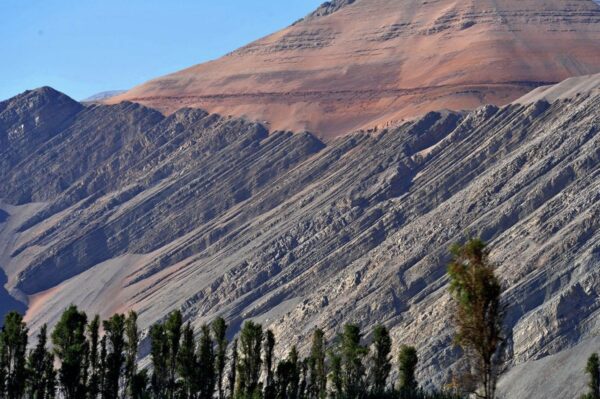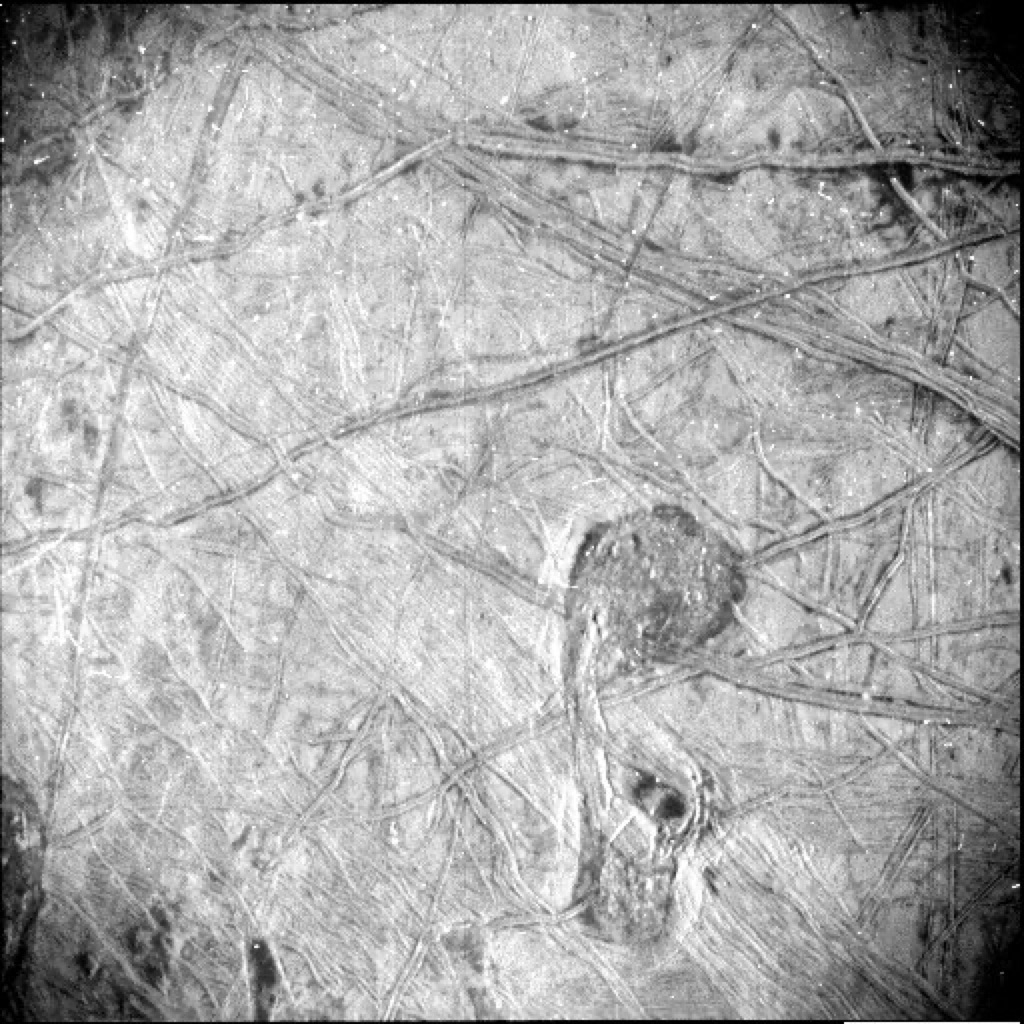About a month ago, NASA’s Juno probe buzzed the Jovian moon Jupiter, and we got this cool picture, taken from a distance of about 400 km away.

The grooves and ridges criss-crossing Europa’s icy shell are thought to record water from Europa’s subsurface ocean reaching the surface through fractures in the crust. Even cooler, one of the oldest rules in the geological book – the principle of cross-cutting relationships – can be applied to this image to demonstrate exactly why Europa is such an exciting world.
The principle of cross-cutting relationships basically states that if one geological feature cuts through another, then the feature doing the cutting is younger than the feature being cut (which has to exist first, in order to be cut through). It’s commonly applied to igneous intrusions:

But you can also apply it to features like faults:

And erosion surfaces:

and, importantly, mysterious grooves on other planets. Starting with the wider purple grooved terrain (purple), we can build up a sequence of shell-cracking events by tracing the network and observing which ridges cut through which others. Green cuts purple. Blue cuts green. Red cuts blue. Orange then cuts red – and so does that weird region that looks like some sort of landslide (shaded yellow). Because blue and yellow do not cross each other, it’s not possible to get their relative timings.

These observations of feature being overprinted by feature, which is then overprinted by yet another feature, is some of the key evidence of Europa being an active world, with a surface that is being reshaped over and extended period of time. I’ve quickly sketched out a sequence of six distinct events where Europa’s shell has fractured, but there are more: for instance, the wide grooved terrain I shaded purple actually cuts across several generations of older ridges.
As on Earth, the power of relative dating is that you can use simple observations to show which events happened in what order. The weakness is that it doesn’t giving you absolute ages or durations. But knowing how the story goes is pretty important, even if you don’t know the tempo – and it is how geologists in the 19th and early 20th centuries unravelled the fundamentals of the history of our planet, way before radiometric dating could put absolute ages on things.



Nice plan for content warnings on Mastodon and the Fediverse. Now you need a Mastodon/Fediverse button on this blog.